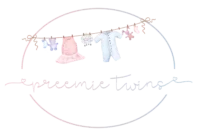Disclosure: This post may contain affiliate links, meaning we get a commission if you decide to make a purchase through our links, at no cost to you. Please read our disclosure for more info.
Breastfeeding is one of the most natural and one of the healthiest things a mother can do for her child. In fact, breastfeeding is the most common and popular way to feed a growing newborn. The reason for this has a lot to do with the number of benefits that go along with breastfeeding.
- Optimal nutrition for babies from the mother.
- Fewer incidents of illness including vomiting and diarrhea
- Boosted immune system against colds, ear infection, and gastroenterologist difficulties
- Improved bone density
- Less risk of childhood obesity
However, even with so many benefits many women are unable to or make the decision not to breastfeed. There are many reasons why a woman would choose not to but many of the reasons have to do with the multitude of myths that surround breastfeeding. These myths have turned some women off to attempting to do this for their child. The following are a few examples of the most commonly believed myths that turn women off from breastfeeding their child.
Breastfeeding is painful – While it is normal for the nipple to be tender for the first few days of breastfeeding, it should never be painful when the baby is latched on correctly. This can be rectified by teaching both the mother and baby how to breastfeed correctly within the first day of birth. Not only will this ensure that the baby is getting enough milk but it will also help to teach the mother how to breastfeed without pain.
Not enough milk is produced – Typically this is seen in the first few days of breastfeeding when the mother and child both are still learning how to have the baby latch on properly. When the baby has not latched on properly, less milk comes out which can make a mother feel as if not enough milk was produced. However, the majority of women produce an abundance of milk. The problem is seen when the child is unable to pull the milk out and the mother becomes discouraged deciding to use formula instead of breastfeeding.
Breast milk does not have enough Vitamin D – This is not true. While babies do need Vitamin D, they are born with an already existing healthy dose in their liver. Then, from the breast milk they do get enough Vitamin D to refill their supply and keep them at sufficient Vitamin D levels. All of the baby’s nutritional needs can be found in the breast milk which makes it healthy as a sole source of nutrition in the first part of the baby’s life.
Nipples should be washed before each breastfeeding session – While it is true that fake nipples found on bottles should be cleansed, natural nipples of the mother do not need to be washed before each cleaning. Instead, children are able to fight off any bacteria that could cause infection with the natural agents found in the breast milk. These same infection fighting chemicals are not found in the formulas. In addition, washing the nipples before each feeding removes the oils that help make breastfeeding comfortable for the mother and baby both.
Bottle feeding is easier than breastfeeding – This may seem to be true if a mother or baby have difficulty latching on. However, once the correct method is learned and the baby is receiving the amount of milk it needs, breast feeding is actually easier than having to care for, carry and cleanse bottles after each meal.
There is no way to know if the baby is getting enough milk – This is one of the biggest myths surrounding breast feeding. While it is true that it may be impossible to measure the exact amount of milk the baby has consumed, mothers will know when the baby has received enough based on the amount of time the baby has spent feeding. This time should only be measured by the actual time spent drinking the milk instead of the time spent sleeping and snuggling next to the mother’s body.
There are many myths that surround breastfeeding and hearing even just one of these can be enough to scare a mother from wanting to breast feed her child. However, with the right technique, breastfeeding can deliver essential benefits to the mother and child alike and deliver better nutrition allowing for the child to develop healthily.
[phpbay]breastfeeding, 2[/phpbay]


